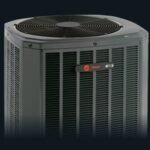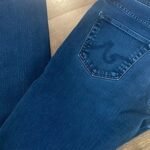Black flying termites, commonly known as alates, are the reproductive members of a termite colony. Their primary role is to leave the nest during swarming seasons to mate and establish new colonies. Understanding their appearance, behavior, and the potential risks they pose is crucial for effective pest management.
Identifying Black Flying Termites
Alates are distinguishable by their dark brown or black bodies and two pairs of equal-length wings that are typically translucent or slightly milky. These wings are about twice the length of their bodies, aiding them in their nuptial flights. Unlike worker termites, which are usually lighter in color, alates’ darker pigmentation helps them retain moisture during their aerial journeys.
Swarming Behavior
Swarming is a natural part of the termite life cycle, occurring when environmental conditions are favorable, often in the spring or after rainfall. During this period, thousands of alates emerge simultaneously, seeking mates to start new colonies. The presence of swarming termites indoors is a strong indicator of an existing infestation within the structure.
Distinguishing Between Flying Termites and Flying Ants
It’s common to confuse flying termites with winged ants. Key differences include:
- Wing Structure: Termites have two pairs of wings of equal size, whereas ants have larger front wings compared to their hind wings.
- Antennae Shape: Termite antennae are straight and beaded, while ants have elbowed antennae.
- Waist Appearance: Termites have a broad, straight waist, in contrast to the narrow, pinched waist of ants.
Potential Risks and Damage
While alates themselves do not cause structural damage, their emergence signifies a mature colony nearby. Worker termites, responsible for feeding the colony, consume cellulose found in wood, leading to significant structural damage over time. Early detection and intervention are vital to prevent extensive harm.
Preventive Measures and Control
- Moisture Management: Repair leaks and ensure proper drainage to eliminate the moist environments that termites favor.
- Wood Inspection: Regularly check wooden structures for signs of damage or hollow sounds, which may indicate termite activity.
- Professional Assistance: If you observe swarming termites or signs of infestation, consult pest control professionals for a thorough assessment and treatment plan.
FAQ
- What should I do if I see black flying termites indoors?
- The presence of alates indoors suggests an active infestation. It’s advisable to contact a pest control professional promptly.
- Are black flying termites attracted to light?
- Yes, alates are attracted to light sources, which is why they are often seen near windows and light fixtures during swarming events.
- Do flying termites cause damage to homes?
- While alates do not cause direct damage, their presence indicates a nearby colony. Worker termites are responsible for structural damage.
- Can I treat a termite infestation myself?
- DIY treatments are generally ineffective against established termite colonies. Professional pest control services are recommended for thorough eradication.
- How can I prevent termite infestations?
- Maintain proper ventilation, reduce wood-to-soil contact, store firewood away from the home, and schedule regular inspections to deter termite activity.
Understanding the role and behavior of black flying termites is essential in identifying potential infestations and taking proactive measures to protect your property from termite-related damage.










